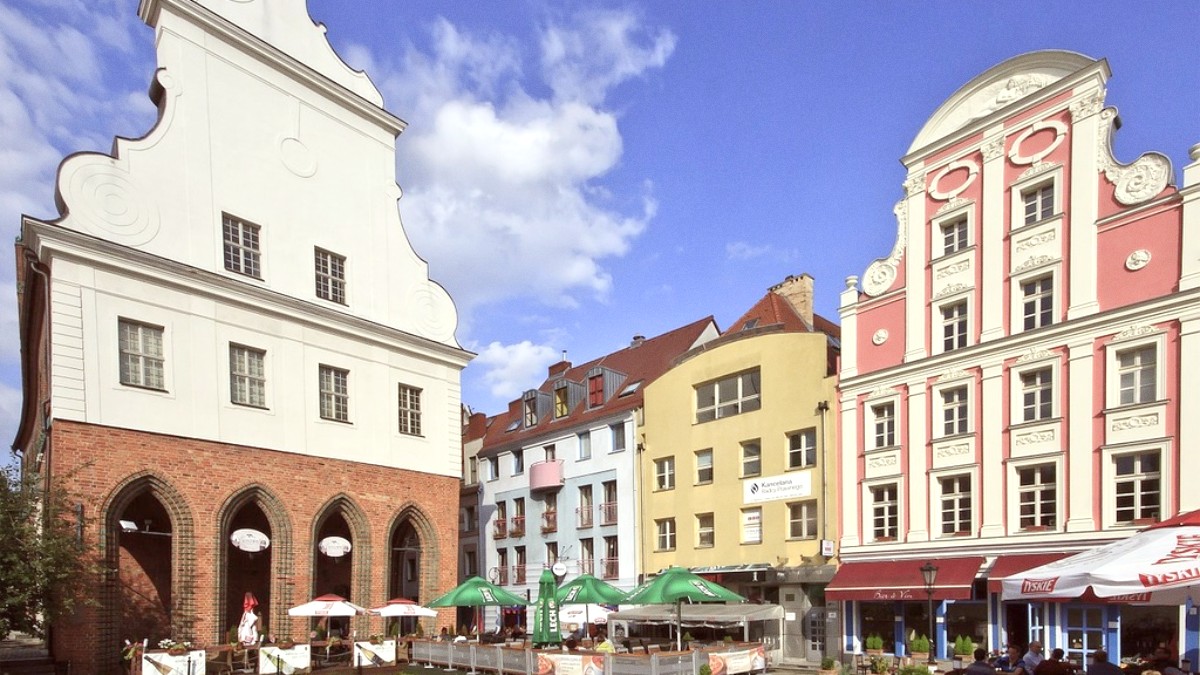
Pomerania, Poland
A blend of German and Polish influences marks Szczecin, reflecting centuries of changing borders and cultures. This guide unlocks Szczecin, showing you how to experience its unique character and uncover its many layers. Explore a destination that often surprises and always delights.
Szczecin, the capital of the West Pomeranian Voivodeship, sits strategically on the Odra River. This river is a significant European waterway, flowing north of Dąbie Lake and south of the Szczecin Lagoon. This position, approximately 65 kilometers (40 miles) from the Baltic Sea, shaped the city's destiny for centuries.
The city’s close proximity to the German border, roughly 150 kilometers (93 miles) northeast of Berlin, makes it a cross-border economic and cultural hub. The Odra River provides a scenic backdrop for the city, with bridges, islands, and waterfront areas. Lake Dąbie, one of Poland's largest lakes, presents recreational opportunities just outside the city center. Boating, sailing, and relaxing by the water are popular here.
Szczecin's story begins in the 8th century, when a West Slavic stronghold stood here. By the Middle Ages, Szczecin became a trade hub, a status solidified in the 13th century when it joined the Hanseatic League. For centuries, Szczecin was part of various states, serving as the capital of the Duchy of Pomerania from the 12th to the 17th centuries. Swedish rule followed, and later, Prussia and Germany governed the city.
World War II inflicted severe damage on Szczecin. Following the war, under the Potsdam Agreement, Szczecin became part of Poland. Polish citizens resettled the city, rebuilding it. The blend of architectural styles reflects this turbulent past: Prussian facades, elegant Art Nouveau buildings, and newer post-war structures. This mix tells a story of survival and transformation.
Laying the foundation for a future urban center.
Brought prosperity and influence through trade.
Era of the Pomeranian Dukes' Castle construction.
City known as Stettin, major industrial and port city.
Resettlement and rebuilding, blending old and new identities.
The city’s history is not just about political shifts. It covers the resilience of its people and the continuous evolution of its identity. The Dialogue Centre Upheavals, a branch of the National Museum, presents a look at Szczecin's post-WWII history, including anti-communist protests.
Walk through layers of history. You discover a city that reinvented itself multiple times while retaining whispers of its former selves. This historical depth gives Szczecin a character many other cities do not possess.
The strategic location at the confluence of cultures made Szczecin a prize for many empires, and its ability to adapt and rebuild speaks volumes about its enduring spirit.
Embrace the chance to learn about these different historical periods, as they illuminate the present-day city.
Szczecin is Poland's seventh-largest city by population, home to approximately 390,000 inhabitants as of 2023. It serves as a regional powerhouse, a hub for economy, science, culture, and tourism.
The city's economic backbone traditionally rests on shipbuilding, maritime transport, and logistics, reflecting its port city status.
Numerous parks and squares dot the urban landscape, providing ample opportunities for relaxation and outdoor activities. This dedication to green infrastructure gives the city a refreshing, open feel.
A distinguishing feature of Szczecin's urban planning is its star-shaped city layout in some areas, resembling the radial layout of Paris. This design creates interesting perspectives and wide, tree-lined boulevards.
The city hosts various theaters, museums, and art galleries. The Szczecin Philharmonic, with its striking architecture, is a cultural jewel, offering world-class musical performances.
The city’s transformation into a modern European center, while maintaining its historical depth and green character, positions it as an attractive destination. You will find a forward-looking urban environment that honors its past.